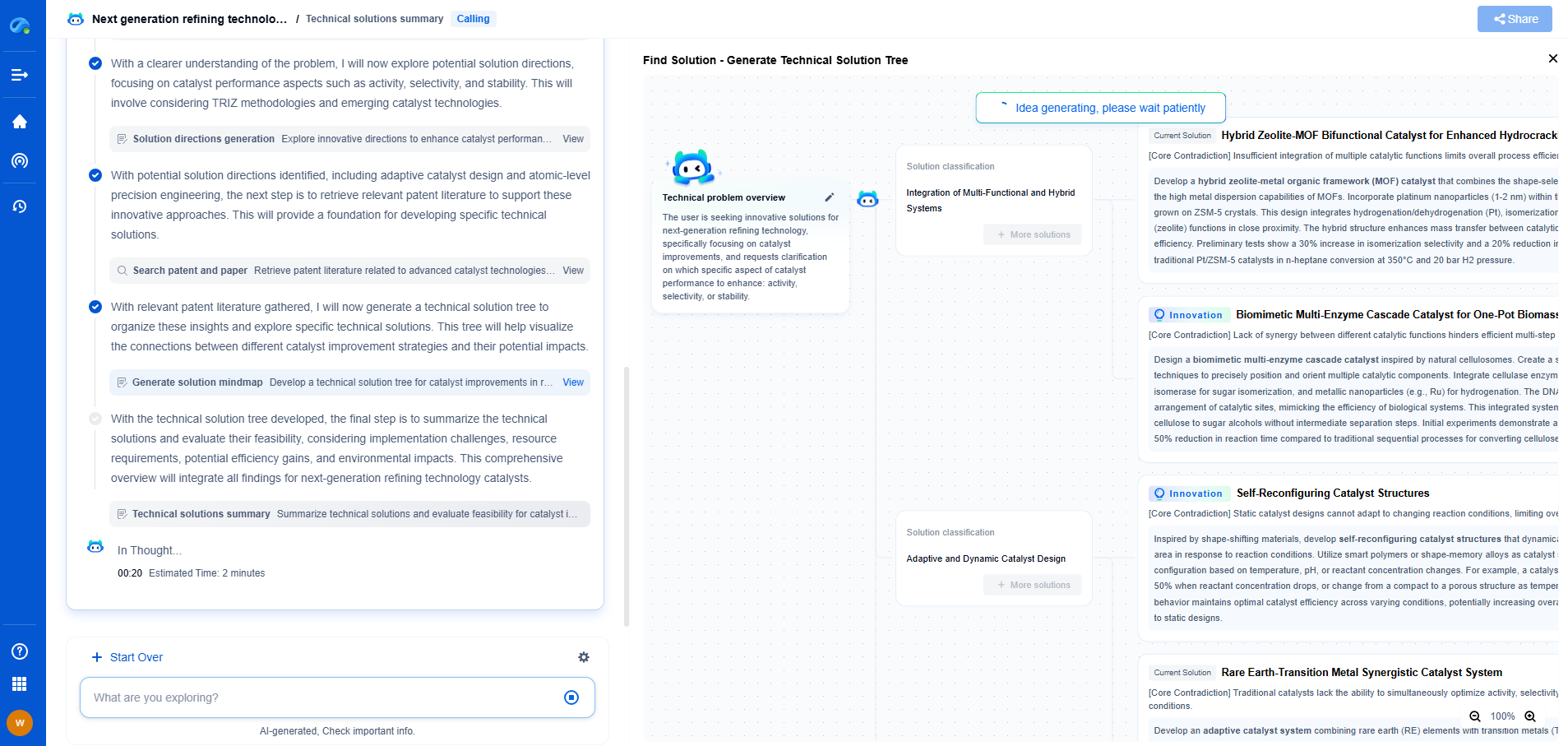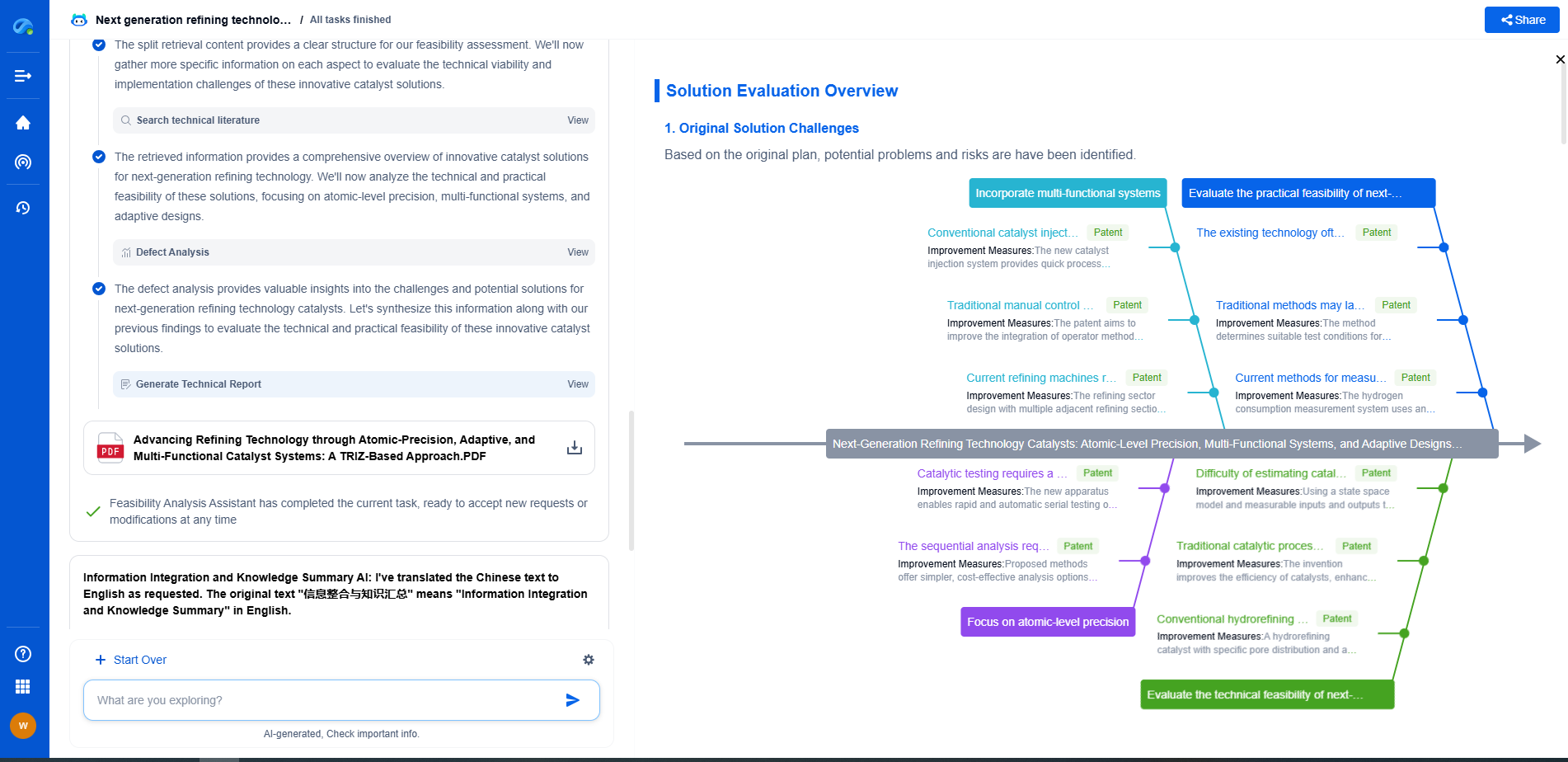Top Challenges in Maintaining Aging Pipeline Infrastructure
JUN 20, 2025 |
As global energy demands continue to rise, the importance of maintaining pipeline infrastructure cannot be overstated. Pipelines serve as the veins of modern society, transporting oil, gas, and other essential resources across vast distances. However, as these pipelines age, they present numerous challenges. Addressing these concerns is vital for ensuring reliability, safety, and environmental protection.
Corrosion and Material Degradation
One of the primary challenges in maintaining aging pipelines is corrosion. Corrosion occurs when materials deteriorate due to chemical reactions with their environment. For pipelines, factors such as moisture, soil composition, and temperature variations can exacerbate corrosion. Over time, this leads to leaks that can have catastrophic consequences for both the environment and human safety. Regular inspections and the application of protective coatings are essential measures to combat this issue.
Technological Limitations
The technology used to monitor and maintain pipelines has advanced significantly over the years. However, integrating modern technologies with older systems can be challenging. Many aging pipelines were built with outdated materials and methodologies, making it difficult to implement new monitoring systems effectively. Upgrading to smart technology, such as sensors and drones, can provide real-time data and early warnings, but the initial cost and complexity of integration remain significant hurdles.
Regulatory and Compliance Issues
Aging pipelines often fall under stringent regulatory scrutiny. As these infrastructures age, compliance with newer safety and environmental standards becomes more challenging. Operators must navigate a complex landscape of local, national, and international regulations, which can vary significantly. Ensuring adherence to these standards while maintaining operational efficiency and profitability is a delicate balancing act. Regular audits and updates to maintenance protocols are necessary to stay compliant.
Financial Constraints
Maintaining and upgrading aging pipelines require substantial financial investment. Many pipeline operators face financial constraints that limit their ability to address all maintenance needs adequately. Prioritizing repairs and upgrades often means making difficult decisions about which issues to address first. Additionally, the costs associated with potential environmental disasters or accidents due to neglected maintenance can be immense, further complicating financial planning.
Environmental Concerns
The potential environmental impact of aging pipelines cannot be ignored. Leaks and spills can have devastating effects on ecosystems, wildlife, and human populations. As pipelines age, the risk of such incidents increases. Implementing robust environmental protection measures, such as regular inspections and rapid response protocols, is crucial. Public pressure and increased awareness of environmental issues also drive the need for responsible maintenance practices.
Human Resource Challenges
The specialized skills required for pipeline maintenance are another significant challenge. As the workforce ages, there's a growing need to attract and train new talent in this field. Knowledge transfer from experienced technicians to newer employees is crucial, yet this process can be hindered by generational gaps and evolving technologies. Investing in education and training programs will help ensure a steady supply of skilled workers capable of maintaining aging infrastructure.
Conclusion
Maintaining aging pipeline infrastructure is fraught with challenges, from corrosion to technological limitations and financial constraints. Yet, addressing these issues is crucial for ensuring the safe and efficient transport of vital resources. By investing in modern technology, adhering to regulations, and prioritizing environmental protection, the industry can tackle these challenges head-on, paving the way for a more secure and sustainable future.
Transform the Way You Innovate in Pipeline Technology—with AI-Powered Intelligence
From corrosion-resistant materials to smart monitoring systems and advanced flow control mechanisms, the pipeline industry is undergoing rapid technological transformation. Yet keeping up with evolving engineering solutions, regulatory landscapes, and competitive patents can be a major bottleneck for R&D and IP teams.
Patsnap Eureka is your AI-powered research companion—built specifically for professionals in high-tech and infrastructure domains like pipeline technology. Whether you're designing high-pressure transport systems, assessing trenchless installation innovations, or safeguarding proprietary flow assurance solutions, Eureka provides real-time insights into global patent trends, emerging technologies, and R&D intelligence—all in one intuitive interface.
Empower your team to innovate faster, reduce technical blind spots, and stay ahead of industry shifts. Discover Patsnap Eureka today and bring clarity and confidence to your pipeline technology decisions.
- R&D
- Intellectual Property
- Life Sciences
- Materials
- Tech Scout
- Unparalleled Data Quality
- Higher Quality Content
- 60% Fewer Hallucinations
Browse by: Latest US Patents, China's latest patents, Technical Efficacy Thesaurus, Application Domain, Technology Topic, Popular Technical Reports.
© 2025 PatSnap. All rights reserved.Legal|Privacy policy|Modern Slavery Act Transparency Statement|Sitemap|About US| Contact US: help@patsnap.com

